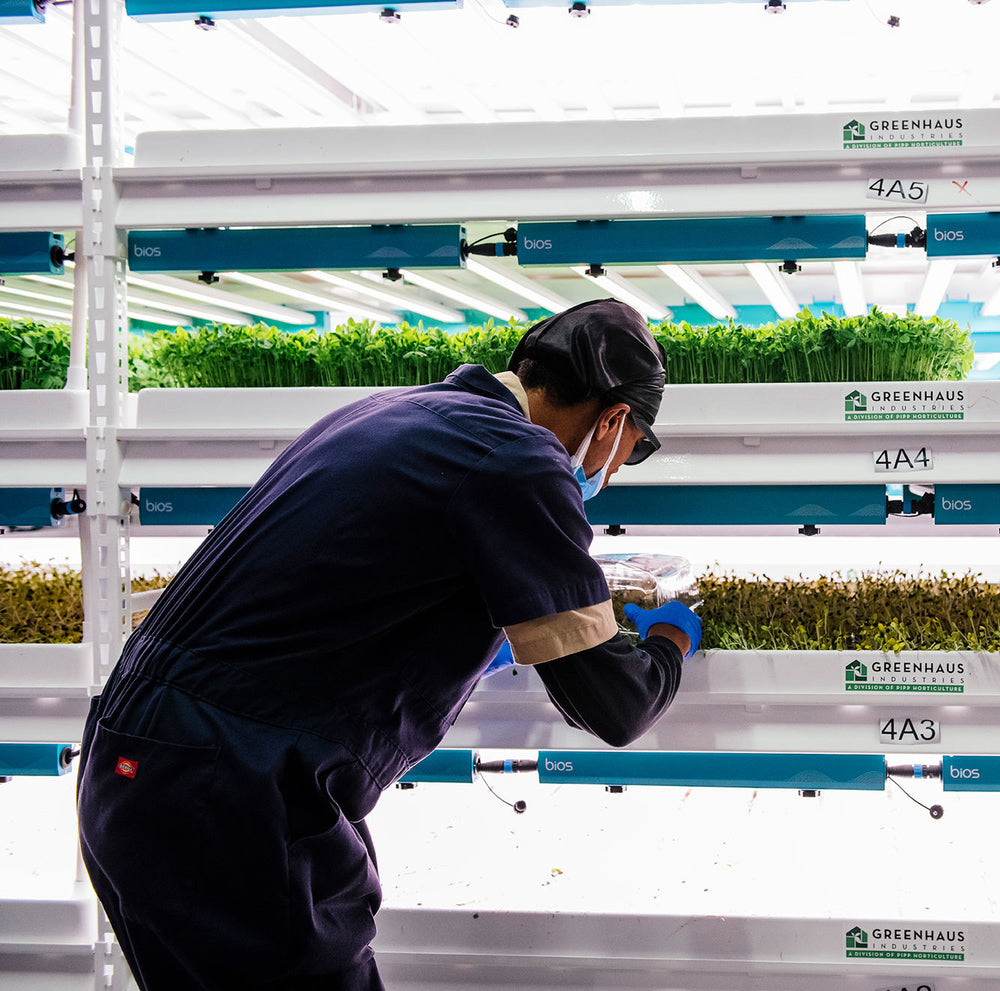
Meg, our Leader of Business Development, came to Planted Detroit after years of working in the world of grocery. In this blog post, she talks about how we see controlled environment agriculture fitting in to the existing agriculture & food systems.

One of the things I always say when giving folks a tour of Planted Detroit’s Islandview campus is when we planted the farm here (pun intended), we made a decision to be additive, not extractive, as a business in Detroit. By that we mean: we won’t draw down city resources, talent, and money without giving back just as much or more - in resources, good jobs, and economic drive.
This same approach - adding without extracting - also applies to how vertical farming fits into the bigger picture of agriculture as a whole. Often we get the question “Will this be the way we farm in the future?” and the answer is “yes, AND.” Here at Planted Detroit, and I think we speak for many other controlled environment ag (CEA) farms, we don’t intend to take the place of traditional agriculture - instead, we want to help improve the overall picture of an agricultural future by adding a different, sustainable method of growing to our foodshed.
You might wonder: why? The additive stance might seem like a counterintuitive position to take as a for-profit company. Part of why is that we can’t do it all. While we can grow beautiful baby greens, microgreens and tender herbs at our Detroit campus, the other types of fruits and vegetables that we all enjoy as part of a healthy diet (like broccoli or sweet potatoes) are not yet possible to grow indoors efficiently. We need our fellow Detroit and Midwest local growers to round out the fresh produce supply chain.
Beyond knitting together a complete supply of produce, the most natural contribution that vertical farming makes to agriculture is the ability to grow 365 days a year. We can grow your salad greens even when there is snow on the ground. Moreover, we’re growing them close to where our customers live - cutting down on the food miles (or distance from farm to plate) in a way that traditional ag, which requires lots of broad, fertile acreage, can’t do. I envision year-round, fresh, local, leafy greens revolutionizing our American salad supply chain, as more vertical farms gain traction from north to south, east to Midwest to California.
Vertically grown produce has an even more important role to play in our future food system: that of an extremely food safe option in a category (leafy greens) where the consumer typically doesn’t cook the end product. Since a cooking step makes produce safer, leafy greens are inherently more risky - therefore having the safest possible raw product will lend confidence to the food safety-savvy shopper. Especially right now, when traditionally grown leafy greens are constantly under scrutiny for food safety concerns, Planted Detroit offers a delicious local alternative that’s also super safe.
We truly believe that as business stakeholders in Detroit, we owe it to the city, its rich history of urban agriculture, and the Detroiters that have held it together over the hard years to be a force for good. Similarly, as vertical farmers in an industry dominated by traditional ag, we owe it to our foodshed to add back in ways that we uniquely can: with safe, local, delicious leafy greens year round.
